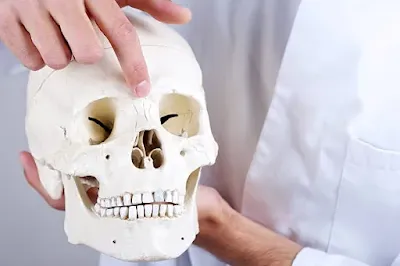What is a Sinus Fracture? Symptoms, Causes, and Treatment
A sinus fracture is a break or crack in the bones surrounding the sinuses, which are air-filled cavities located in the facial region. These fractures often occur due to trauma, such as facial injuries from accidents, falls, or physical assaults. Understanding the symptoms, causes, and treatment options for sinus fractures is essential for timely and effective care.
What is a Sinus Fracture?
Sinus fractures are injuries affecting the bony walls of the sinuses, which include:
- Frontal Sinuses (above the eyes and forehead)
- Maxillary Sinuses (in the cheeks)
- Ethmoid Sinuses (between the eyes)
- Sphenoid Sinuses (behind the eyes)
The frontal and maxillary sinuses are the most commonly involved in fractures due to their prominence in the facial structure.
Causes of Sinus Fractures
Sinus fractures typically result from direct trauma to the face. Common causes include:
- Motor Vehicle Accidents: High-impact collisions often lead to fractures.
- Falls: Accidental falls, especially from significant heights, can result in facial injuries.
- Sports Injuries: Contact sports like football or boxing can cause blunt trauma to the face.
- Physical Assaults: Blows to the face during altercations are another leading cause.
- Industrial Accidents: Workplace incidents involving heavy objects striking the face.
Symptoms of a Sinus Fracture
The symptoms of a sinus fracture depend on the severity and location of the injury. Common signs include:
-
Pain and Swelling
- Tenderness or swelling around the affected sinus.
- Pain that worsens with facial movement or touch.
-
Bruising
- Visible bruising around the eyes, nose, or cheeks.
-
Nasal Symptoms
- Difficulty breathing through the nose.
- Nasal congestion or obstruction.
- Bloody or clear nasal discharge (suggesting cerebrospinal fluid leakage in severe cases).
-
Facial Deformity
- Visible changes in the facial structure, especially in severe fractures.
-
Vision Problems
- Double vision or difficulty focusing if the fracture impacts the orbital (eye) region.
-
Numbness or Tingling
- Loss of sensation in the upper lip, cheeks, or teeth due to nerve damage.
-
Sinus Symptoms
- Persistent sinus headaches.
- Infections or chronic sinusitis as a result of disrupted sinus drainage.
Diagnosis of a Sinus Fracture
A sinus fracture is diagnosed through:
- Physical Examination: A doctor will assess visible injuries, swelling, or deformities.
- Imaging Tests:
- CT Scan: The most reliable imaging method to detect fractures and assess their severity.
- X-Rays: Occasionally used but less detailed than a CT scan.
Treatment Options for Sinus Fractures
Treatment depends on the severity and type of fracture. Options include:
1. Non-Surgical Management
For minor fractures, conservative treatments may be sufficient:
- Pain Management: Over-the-counter or prescription pain relievers to reduce discomfort.
- Decongestants: Medications to alleviate nasal congestion and facilitate sinus drainage.
- Rest: Avoiding activities that may worsen the injury, such as blowing the nose.
2. Surgical Intervention
Severe sinus fractures often require surgery, especially if there are complications. Common procedures include:
- Fracture Repair: Realignment of bones to restore facial structure and function.
- Drainage of Sinuses: Removal of trapped blood, mucus, or infection.
- Orbital Reconstruction: Repair of fractures near the eye to restore vision and prevent deformities.
- CSF Leak Repair: If cerebrospinal fluid leakage is present, it must be surgically repaired to prevent infection and complications.
3. Post-Treatment Care
- Antibiotics: To prevent infection, especially in open fractures or after surgery.
- Follow-Up Appointments: Regular check-ups to monitor healing and address complications.
Complications of Sinus Fractures
If left untreated, sinus fractures can lead to complications such as:
- Chronic Sinusitis: Persistent inflammation and infection due to disrupted drainage.
- Facial Deformities: Misaligned bones can cause long-term cosmetic and functional issues.
- Vision Impairments: Damage to the orbital region can affect eyesight.
- Meningitis: Infection spreading to the brain if there is a cerebrospinal fluid leak.
Preventing Sinus Fractures
While not all accidents can be avoided, you can reduce the risk of sinus fractures by:
- Wearing protective gear during sports and high-risk activities.
- Using seat belts and airbags in vehicles.
- Following workplace safety protocols in industrial environments.
Conclusion
Sinus fractures are serious injuries that require prompt attention to prevent complications. Understanding the symptoms, causes, and treatment options is key to effective management. Whether it’s a minor injury or a severe fracture requiring surgery, timely intervention can ensure proper healing and restore both form and function. If you suspect a sinus fracture, consult a healthcare provider immediately for diagnosis and personalized care.


